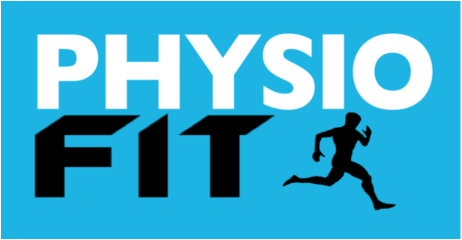How not to rupture your ACL – Emily Peut
Our trusted partners in Physiotherapy – we have the pleasure of our continued collaboration with Physio Fit’s Emily Peut. Emily has a passion and knowledge base for ACL (Anterior Cruciate Ligament) injuries in Adelaide. She has extensively studied and applied her knowledge to be one of Adelaide most trusted physiotherapists. Please join us to learn more about how to prevent ACL injuries.
Dr Chien-Wen Liew
Physiofit have branches in Modbury and Findon.
Find PhysioFit at: http://physiofitadelaide.com.au
How not to rupture your ACL
Why is it that an athlete can perform the same change of direction and twisting type motion a thousand times during a season and then the thousand and first time they do that exact same motion, they rupture their ACL?
And why is it that even with the best prevention programs in place in elite sports such as AFL, the incidence of ACL rupture is increasing (3 ruptures within Round 1 of the 2019 Mens AFL season)?
Unfortunately, science does not yet have a solid answer. However, we do know that there are both modifiable and non-modifiable factors that can increase your risk of ACL rupture. Perhaps as health professionals we should be focusing our attention on how NOT to rupture your ACL instead of just rehabilitation after it has already happened.
ACL injuries can be REDUCED by 50% with a 30-minute neuromuscular program per week (Finch et al. 2016). Even better, the 30 minutes can be broken down into 10-minute blocks before trainings and games and still have the same effect. At the end of the day what is 10 minutes compared to 12 months off? There are specific programs that have been developed for soccer, AFL and netball with free and easy to follow exercises:
- FIFA 11+
- AFL Footy First
- Netball Knee
Neuromuscular programs are programs designed to improve the strength, flexibility, control, balance and co-ordination of athletes and should include agility, balance and plyometrics based exercises (Ayala et al. 2017).
This may include exercises such as:
- Planks and side-planks
- Nordic Hamstring curls
- Walking lunge with rotation
- Stationary and dynamic ball passing/catching drills at different angles standing or landing on one leg
- Side-to-side and forwards-backwards hopping and jumping with focus on soft and controlled landings
- Zig-zag running and side-stepping
- Bounding
- Unanticipated change of direction with attacker/defender drills
- Jumping/hopping with partner push or bumps whilst in the air
Not only do we know that these programs reduce the risk of ACL injury, they also reduce ankle injuries by 40% and all other lower limb injuries by 22% (Grimm et al. 2016).
There are also some non-modifiable factors which place some athletes at high-risk of ACL rupture, and these individuals need to be identified during pre-season screening and be required to participate in such programs. This includes:
- 14-18 year olds and males 19-25 year old (Sanders et al. 2016)
- Players with a past history of ACL injury (Morgan et al. 2016)
- Those with a family history of ACL injury (mother or father) (Smith et al. 2012)
- Athletes with current or a past history of patellofemoral joint pain (Myer et al. 2015)
- Female athletes partly attributed to hormonal changes during the menstrual cycle as well as biomechanical differences due to wider hips compared to males (Park et al. 2009).
ACL injury can be a sport- or career-ending injury for some players, not to mention the physical, emotion and financial costs associated. Let’s focus on preventing them before it’s too late.
Emily Peut
APA Titled Sports and Exercise Physiotherapist
Ayala, F., Pomares-Noguera, C., Robles-Palazon, F. J., Del Pilar Garcia-Vaquero, M., Ruiz-Perez, I., Hernandez-Sanchez, S., et al. (2017). Training effects of the FIFA 11+ and harmoknee on several neuromuscular parameters of physical performance measures. Int. J. Sports Med. 38, 278–289. doi: 10.1055/s-0042-121260
Finch CF, Twomey DM, Fortington LV, et alPreventing Australian football injuries with a targeted neuromuscular control exercise programme: comparative injury rates from a training intervention delivered in a clustered randomised controlled trialInjury Prevention 2016;22:123-128.
Grimm, N.L., Jacobs, J.C., Kim, J, Denney, B.S., Shea, K.G. 2016, ‘Anterior Cruciate Ligament and Knee Injury Prevention Programs for Soccer Players: A Systematic Review and Meta-analysis’, American Journal of Sports Medicine, Vol. 43, No. 8, pp 2049-56.
Morgan MD, Salmon LJ, Waller A, Roe JP, Pinczewski LA. Fifteen-Year Survival of Endoscopic Anterior Cruciate Ligament Reconstruction in Patients Aged 18 Years and Younger. The American journal of sports medicine. 2016 Feb;44(2):384-92. PubMed PMID: 26759030. Epub 2016/01/14. eng.
Myer GD, Ford KR, Di Stasi SL, Foss KD, Micheli LJ, Hewett TE. High knee abduction moments are common risk factors for patellofemoral pain (PFP) and anterior cruciate ligament (ACL) injury in girls: is PFP itself a predictor for subsequent ACL injury? British journal of sports medicine. 2015 Jan;49(2):118-22. PubMed PMID: 24687011. Pubmed Central PMCID: PMC4182160. Epub 2014/04/02. Eng.
Sanders TL, Maradit Kremers H, Bryan AJ, Larson DR, Dahm DL, Levy BA, et al. Incidence of Anterior Cruciate Ligament Tears and Reconstruction: A 21-Year Population-Based Study. The American journal of sports medicine. 2016 Jun;44(6):1502-7. PubMed PMID: 26920430. Epub 2016/02/28. Eng.
Smith HC, Vacek P, Johnson RJ, Slauterbeck JR, Hashemi J, Shultz S, et al. Risk factors for anterior cruciate ligament injury: a review of the literature-part 2: hormonal, genetic, cognitive function, previous injury, and extrinsic risk factors. Sports health. 2012 Mar;4(2):155-61. PubMed PMID: 23016083. Pubmed Central PMCID: PMC3435909. Epub 2012/09/28. eng.
Easter Orthopods 2023
Easter Egg-Citement! What better way to celebrate Easter than with a competition for our nurses! Join us for a fun filled egg-citing journey to claim your prize!How to Play: If you are a nurse or staff member who works in the St Andrews theatre...
Christmas Hours
Christmas Hours Monday 21 Dec 20 - Open as usual Tuesday 22 Dec 20 - Open as usual 23 Dec 20 until 10 Jan 21 - CLOSED Please contact us via email during the break so we can get back to you once the office reopens. Merry Christmas and a happy new year! Thankyou...
Business Profile Chameleon Art Rental
Recently we held a competition on our Facebook page. Some of the fantastic businesses that were highlighted are people that we have had the pleasure of meeting, or even treating over the past few years. In this case, our competition was viewed on our Instagram! Our...
Orthopaedics 360
Orthopaedics 360
P: (08) 7099 0188
F: (08) 7099 0171
Southern Specialist Centre
Orthopaedics 360
P: (08) 7099 0188
F: (08) 7099 0171
Health @ Hindmarsh
Orthopaedics 360
P: (08) 7099 0188
F: (08) 7099 0171



